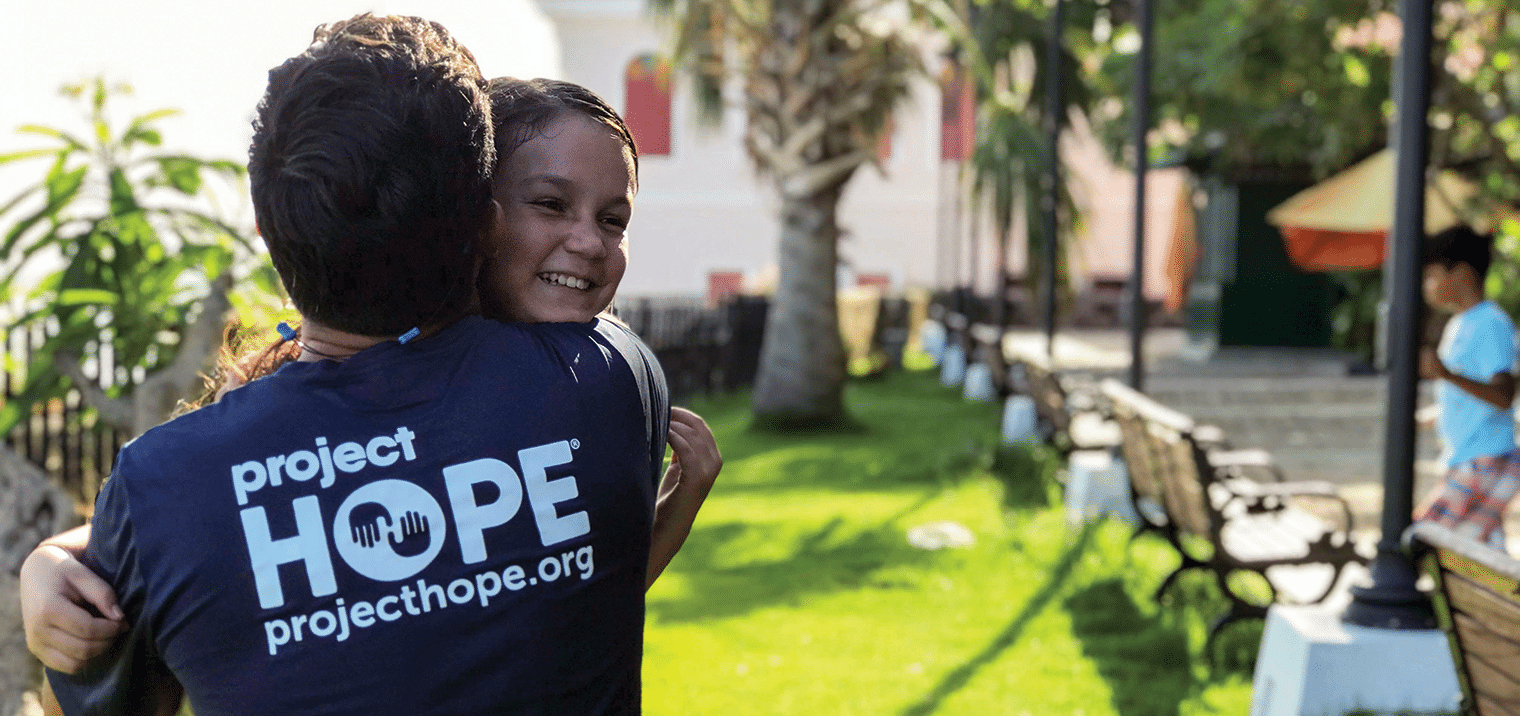
Living With Diabetes in the Wake of Hurricane Maria
Project HOPE gave eight-year-old Nayeli a year’s supply of insulin after her life was threatened by Hurricane Maria. Today, she’s growing into a role as a mentor in her community, as Project HOPE continues its work to support diabetes patients and protect the island’s insulin supply.
It’s been two years since Hurricane Maria ravaged Puerto Rico, leaving the entire island without power and limiting access to clean water and food for most residents. For Nayeli and more than half a million others, losing power meant losing access to the medicine they depended on to stay alive and lead their normal, everyday lives.
Nayeli has Type 1 diabetes. She was diagnosed when she was just three years old, and had to learn at an early age how to monitor her blood sugar levels and give herself injections.
In 2017, Hurricane Maria took away her lifeline — her insulin.
Nayeli and her family live in the small municipality of Humacao in southeastern Puerto Rico, a short drive from where the Category 5 storm first made landfall. It was the worst storm to hit the island territory in over 80 years, and evidence of the storm still remains.
“It was almost a year without electricity or water,” shares Nayeli’s father, Omar. “The water came back faster, but we needed electricity. We needed the electricity because of Nayeli’s insulin, which had to be refrigerated.”
For Nayeli, electricity is more than just a convenience — it’s a necessity. Without it, insulin can’t be kept cold, and becomes useless.
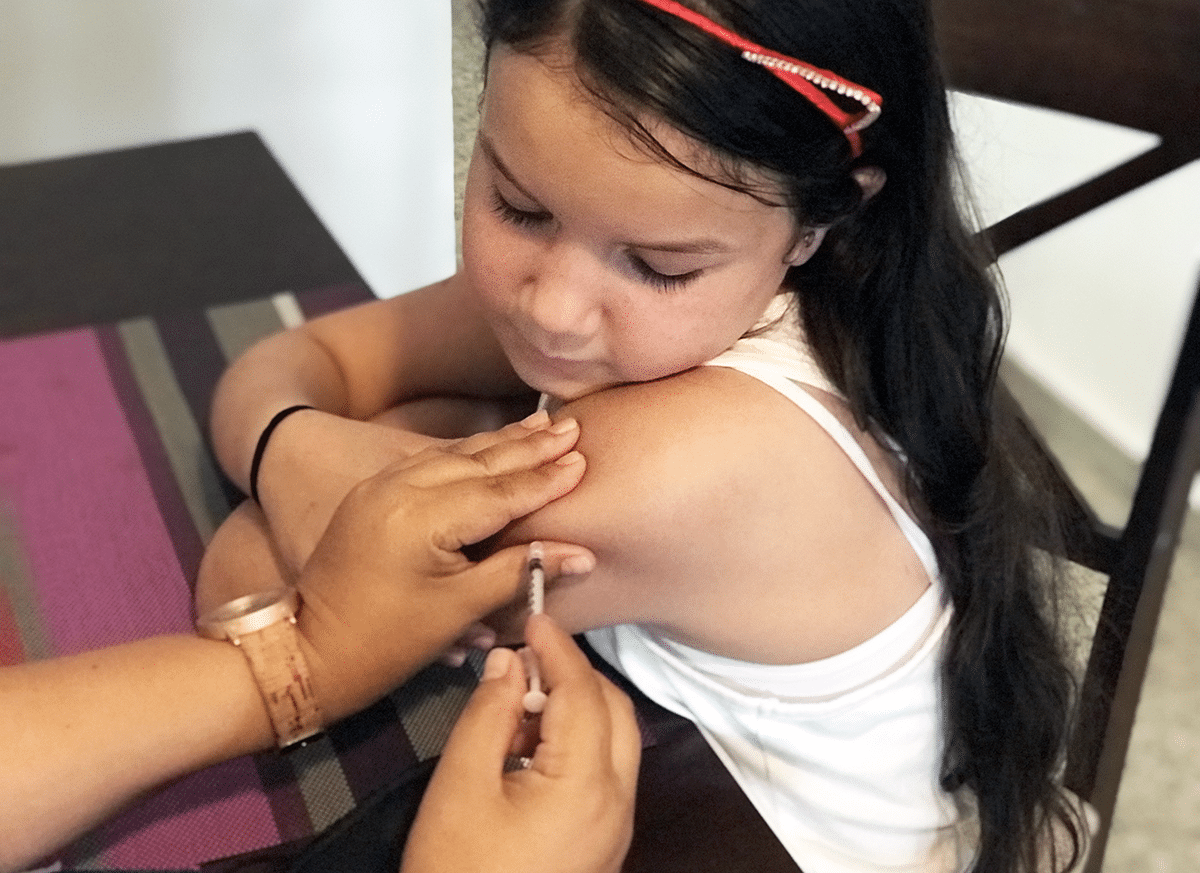
Nayeli isn’t alone. Around one in six people in Puerto Rico have diabetes — nearly 15 percent of all adult residents. It’s the third leading cause of death on the island, behind heart disease and cancer. Some patients can only survive days without their medication.
But Nayeli is not a statistic. She’s a daughter, a big sister, a student, role model and friend. She loves her dog, Roxie, rides a purple and black bike, and has a stuffed monkey named Coco who also has Type 1 diabetes.
In the immediate aftermath of Hurricane Maria, Project HOPE delivered over $2 million in medical supplies, including 1,500 vials of insulin, to Puerto Rico’s most vulnerable insulin-dependent patients, including Nayeli.
That insulin has gone a long way in keeping Nayeli alive, healthy and thriving.
“Thanks to Project HOPE, we’ve probably even come out a little bit better – a little bit stronger – since the hurricane,” says Omar.
Now 10 years old and in the fifth grade, Nayeli has become a model of resilience in her community and at her school, educating her fellow peers about diabetes and mentoring younger ones more recently diagnosed with the condition. She has also excelled in her studies, in spite of her own condition, and was recently nominated by her teacher for her performance as an outstanding student.
“A lot of my new friends in school don’t know about the condition, and ask me about the thing I have on my arm or my belly,” she says. “I normally tell kids it’s a condition, it’s a disease that you have, that you can control. You can’t eat all the things that you usually like. But sometimes you can eat those things, if you are very careful.”
Her resilience and perseverance have been recognized outside of school, too. Last October, she traveled to Washington to accept the Global Health Beneficiary Award at the annual Project HOPE Gala. It was her first visit to the continental U.S. and her first time on a plane. And in March, she was honored and interviewed on television by the Cross the Goal Foundation, a local organization dedicated to promoting education among young people and adults with diabetes.
“I tell everybody that you should never let diabetes interrupt your dreams. You can still do what you want.”
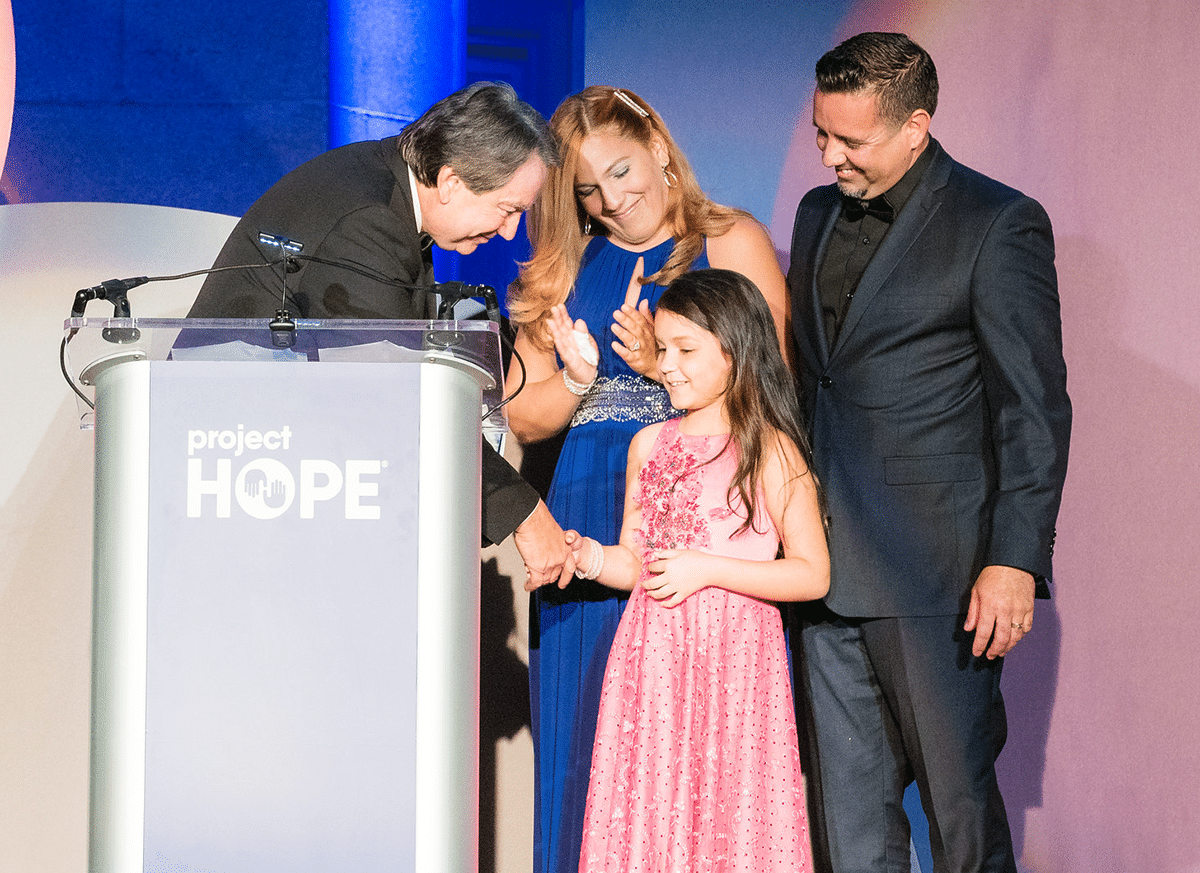
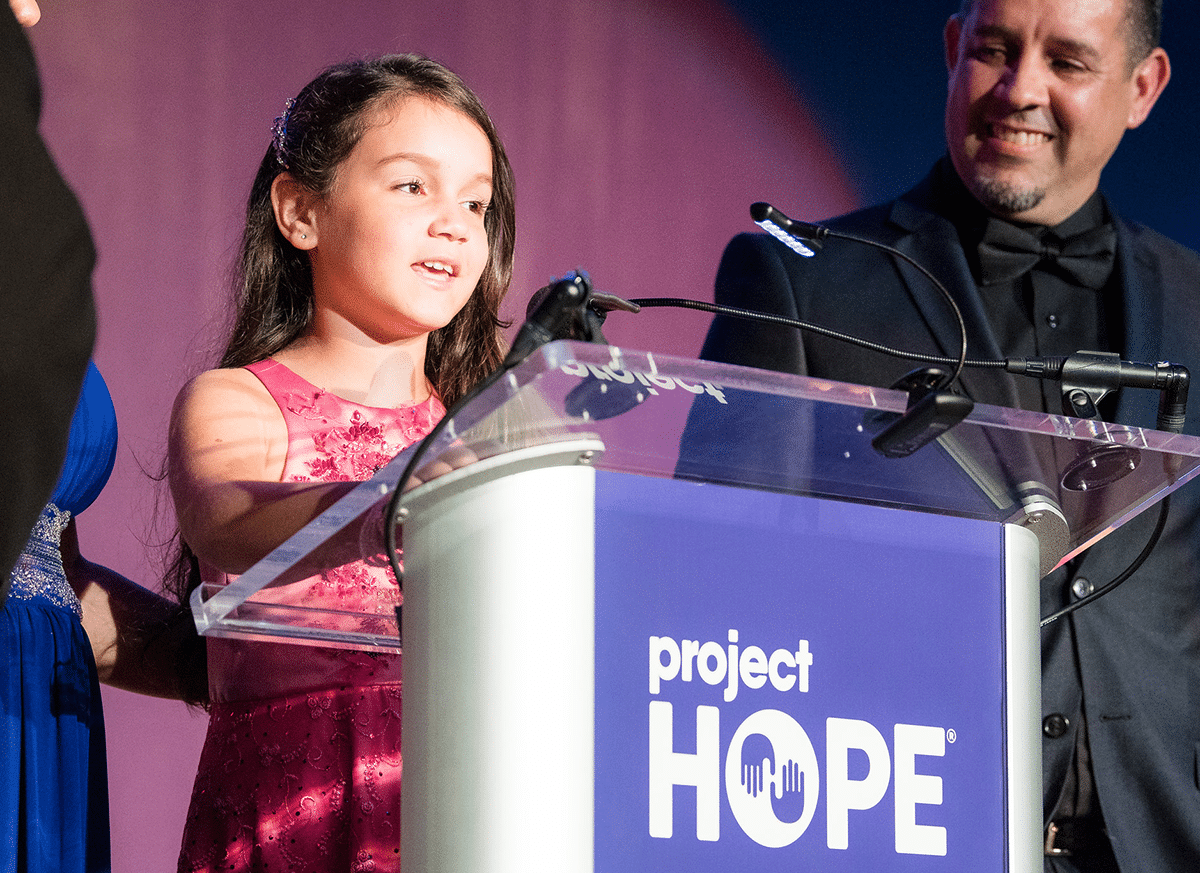
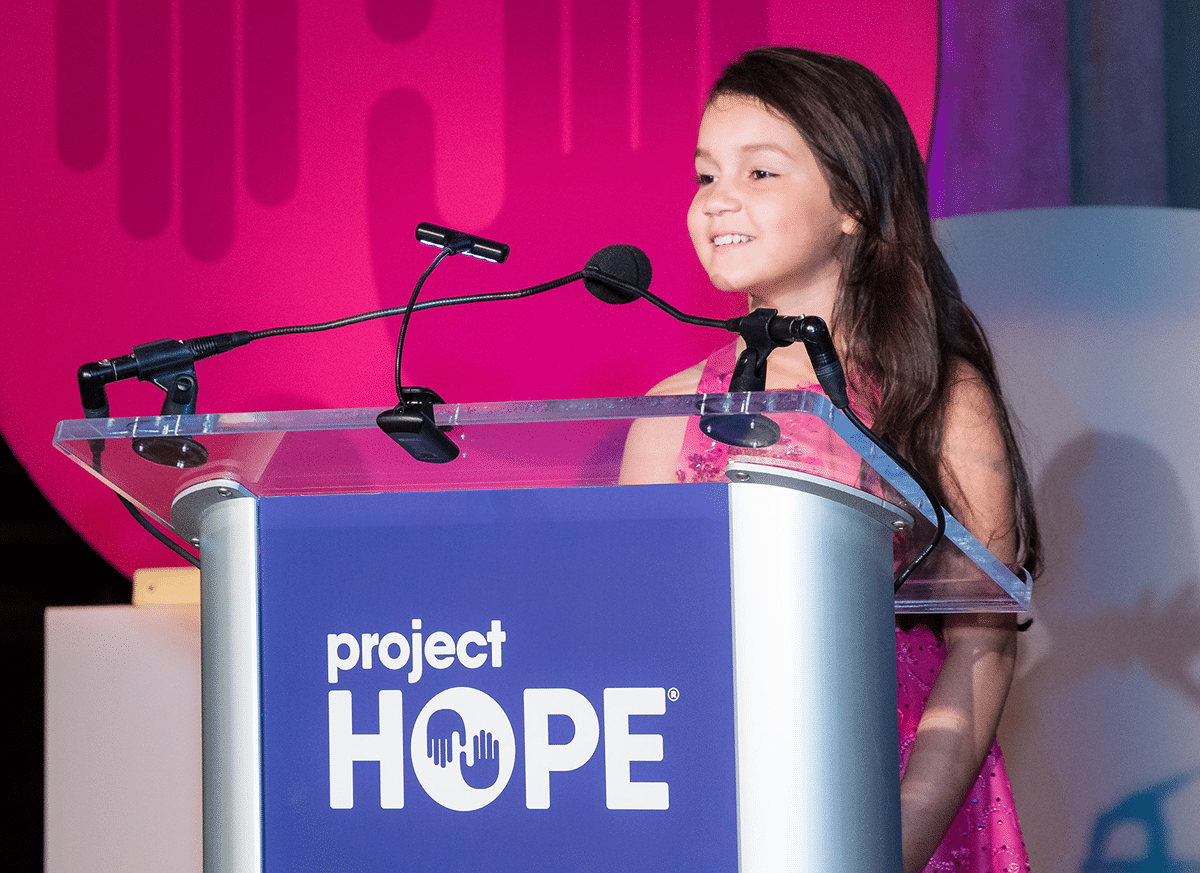
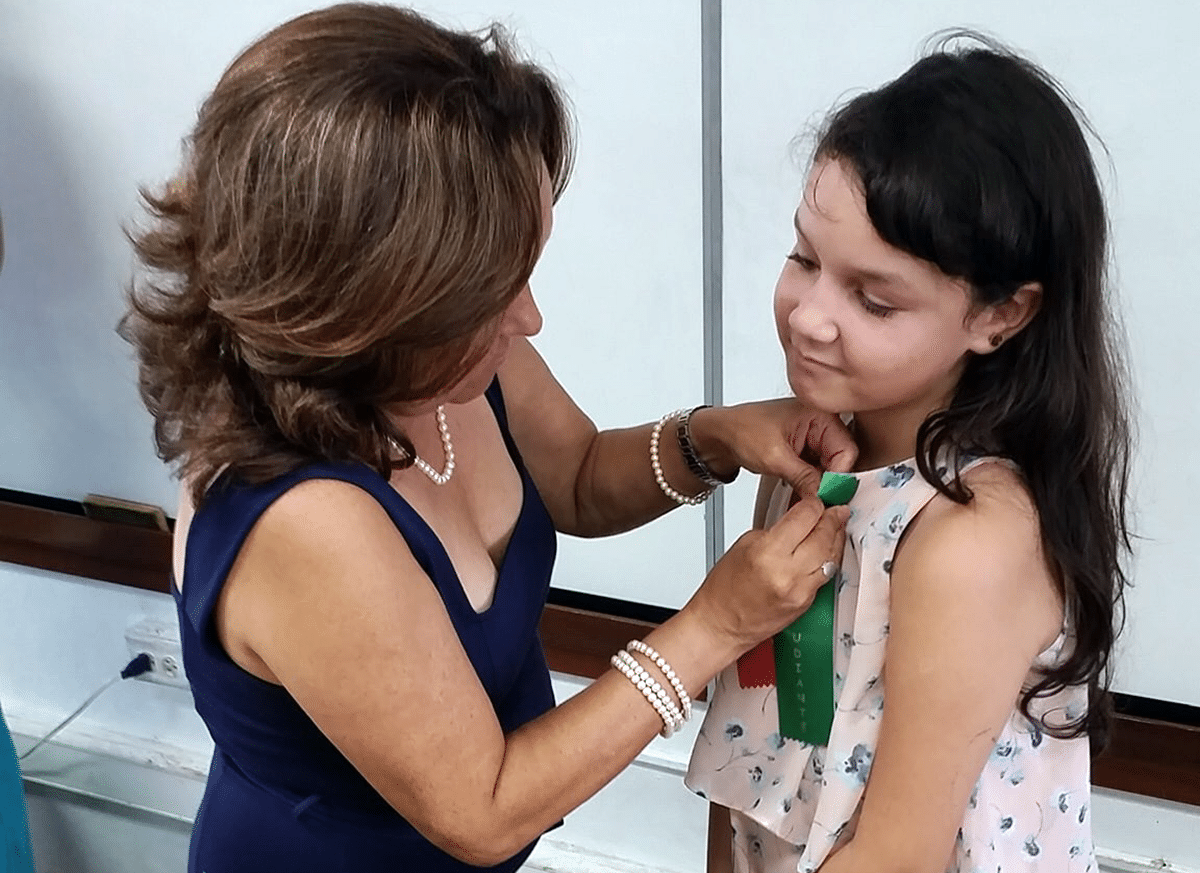
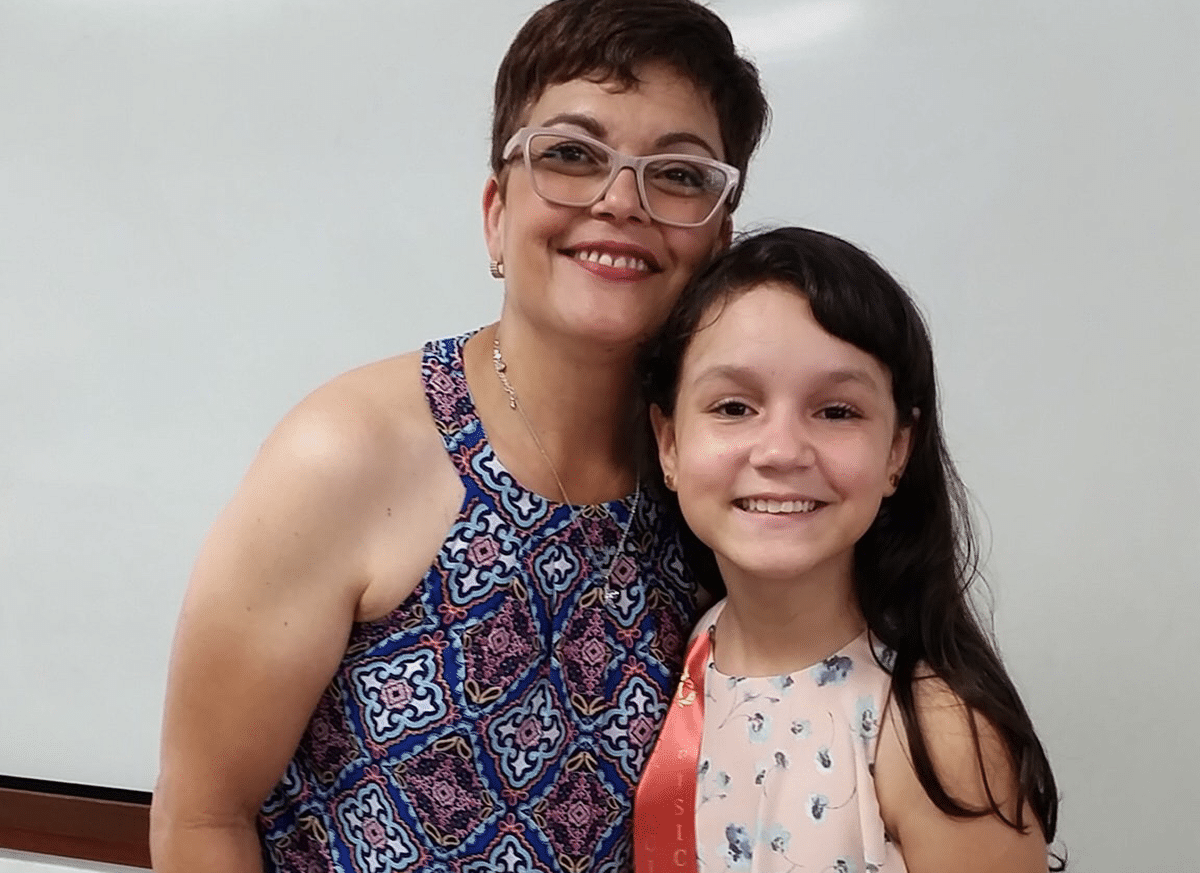
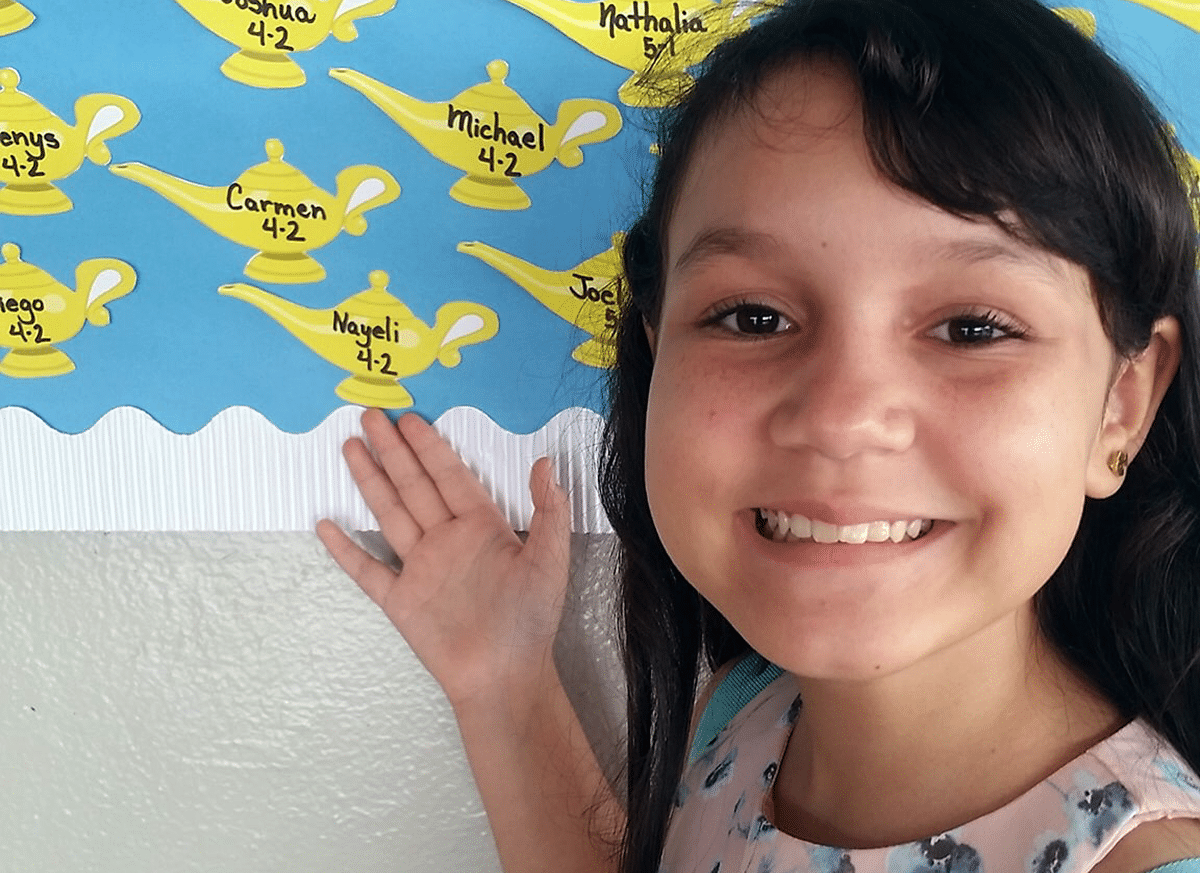






Nayeli is more in control of her condition than ever: She has an insulin pump now, so she doesn’t have to worry about measuring her insulin or giving herself injections. This same time last year, Nayeli and her mom Rosalyn weren’t able to sleep through the night — Rosalyn had to wake up to check Nayeli’s blood sugar levels, and sometimes she’d have to wake up Nayeli, too, for a shot. Now, this only happens once or twice a week, when the pump sends an alert that her levels have dropped.
The pump also means Nayeli’s school days go (mostly) uninterrupted. “The pump is easier, because I don’t have to worry about giving myself injections all day,” she says. “I just hit a couple buttons and that’s it. And mom doesn’t have to come back and forth to school to help me.”
But the pump still depends on electricity – and insulin – and it will only be a matter of time before the next storm strikes.
“The power grid is very fragile,” says Dr. Mike Fucile, a Project HOPE partner at a clinic in Corozal. “We know we are still vulnerable. It’s just a question of time. We’re going to see more hurricanes.”
For Puerto Ricans, Hurricane Maria isn’t a memory of the past. Many are still recovering, living in the shadow of the storm. Omar says many people in their community are still living under blue tarps. According to Puerto Rico’s Housing Administration, up to 30,000 people still don’t have permanent roofs over their heads, while some cities and towns in the more remote and mountainous central highlands are still rebuilding roads.
But time doesn’t stop, and the next storm won’t wait. It’s the peak of the 2019 hurricane season. While spared by Hurricane Dorian, the island continues to hold its breath until November (the end of hurricane season), living at the mercy of the forecast and treading above an undercurrent of tension and stress.
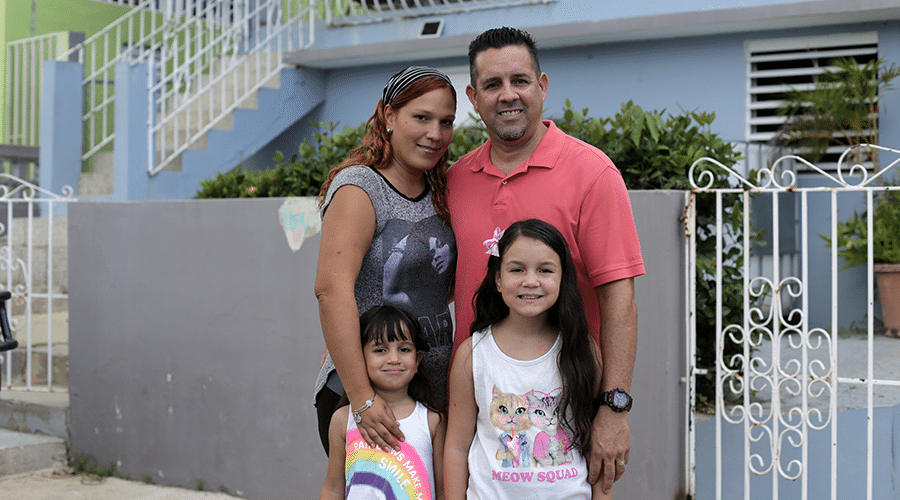

Restoring HOPE, securing the insulin supply
Nayeli’s story is one of many that has propelled us to continue our work in Puerto Rico over the past two years.
Project HOPE was one of the first nonprofit organizations on the ground after the storm, and remains committed to supporting the island’s long-term recovery. Since Maria, we’ve worked to improve self-management among people with diabetes, building their resilience to withstand future disasters, while strengthening the health system’s ability to weather another storm.
We’ve reached more than 1,770 people with screenings or health education, and hundreds of diabetes patients with education on best practices and healthier habits through our signature “5 Steps to Self-Care” program. We’ve trained health workers at over 20 different clinics across the island to help us facilitate the program, which is implemented at the primary care level through federally qualified health care centers, and in communities with the support of community leaders. We’ve also provided mental health counseling for more than 600 children coping with traumatic memories of the storm.
To protect the temperature-sensitive medicine and vaccine supply, we’ve partnered with the University of Puerto Rico to build solar-powered medical refrigeration centers across Puerto Rico. The cold chain will ensure diabetes patients still have access to their medication in the event of another disaster. Securing insulin for Nayeli will be her parents’ number-one priority when that day comes. “First insulin, then food and water,” echoes Nayeli.
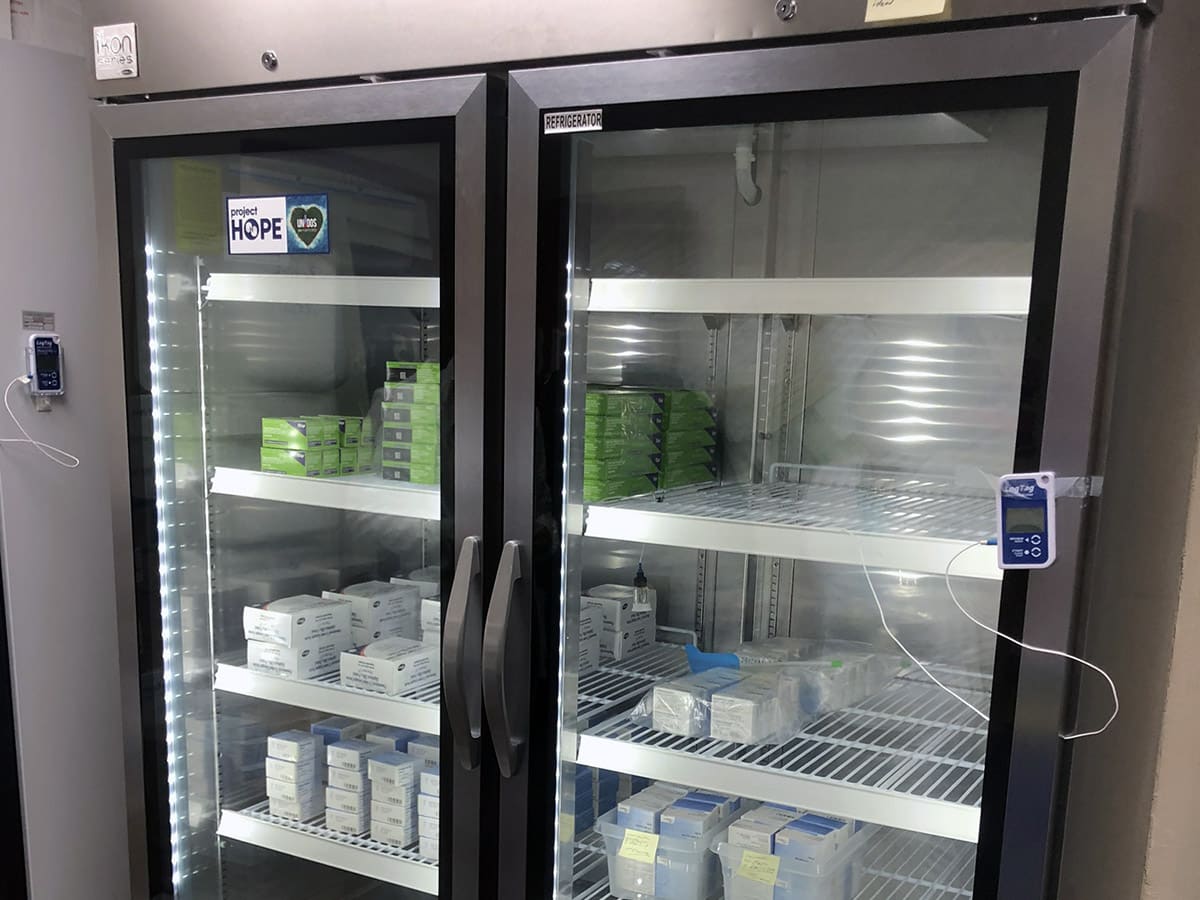
It’s impossible to predict exactly what will happen in the future, but we can plan and prepare to protect the emergency medicine supply. Volunteer Project HOPE nurse Elsy Benitez-Vargas puts it best: “We can’t prevent [loss of life] during the hurricane, but we can prevent loss of life after the hurricane, by being better prepared.”
So that’s what we’ll do.
Now, thanks to the cold chain, Nayeli and her family can rest assured her insulin is safe — and her diabetes is under their control — no matter the forecast.
Read more about our work in the United States & Territories
Read more about our work in disasters & health crises
How you can help
Make a lifesaving gift to support our work now and for the future at projecthope.org/donate.
Are you a health-care or other professional who would like to learn more about volunteering abroad with Project HOPE? Learn more about our volunteer program and join our volunteer roster.
Stay up-to-date on this story and our lifesaving work around the world by following us on Facebook, Instagram, LinkedIn and Twitter, and help spread the word by sharing stories that move and inspire you.